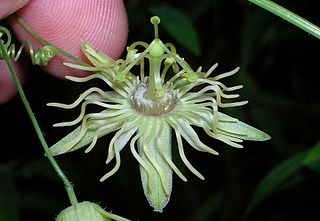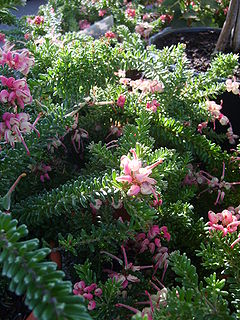
Asuras are a class of beings or power-seeking clans related to the more benevolent Devas in Hinduism.
Hindu deities are the gods and goddesses in Hinduism. The terms and epithets for deity within the diverse traditions of Hinduism vary, and include Deva, Devi, Ishvara, Ishvari, Bhagavān and Bhagavati.

Kurma, also known as 'KurmaRaja' is an avatar of the Hindu god Vishnu. Originating in Vedic literature such as the YajurVeda as being synonymous with the Saptarishi called Kasyapa, Kurma is most commonly associated in post-Vedic literature such as the Puranas with the legend of the churning of the Ocean of Milk, referred to as the Samudra manthan. Also synonymous with Akupara, the world-turtle supporting the Earth, Kurma is listed as the second incarnation of the Dashavatara, the ten principal avatars of Vishnu.

The macula (/ˈmakjʊlə/) or macula lutea is an oval-shaped pigmented area near the center of the retina of the human eye and some other animalian eyes. The macula in humans has a diameter of around 5.5 mm (0.22 in) and is subdivided into the umbo, foveola, foveal avascular zone, fovea, parafovea, and perifovea areas.

Deva means "heavenly, divine, anything of excellence", and is also one of the terms for a deity in Hinduism. Deva is a masculine term; the feminine equivalent is Devi.

A daeva is a Zoroastrian supernatural entity with disagreeable characteristics. In the Gathas, the oldest texts of the Zoroastrian canon, the daevas are "gods that are rejected". This meaning is – subject to interpretation – perhaps also evident in the Old Persian "daiva inscription" of the 5th century BCE. In the Younger Avesta, the daevas are divinities that promote chaos and disorder. In later tradition and folklore, the dēws are personifications of every imaginable evil.

The buff ermine is a moth of the family Erebidae. It is sometimes placed in the genus Spilosoma. The species was first described by Johann Siegfried Hufnagel in 1766. It is found throughout the temperate belt of the Palearctic region south to northern Turkey, Georgia, Kazakhstan, southern Siberia, eastern Mongolia, Amur Region, China, Korea and Japan.

Ixia is a genus of cormous plants native to South Africa from the family Iridaceae. Some of them are known as the corn lily. Some distinctive traits include sword-like leaves and long wiry stems with star-shaped flowers. It usually prefers well-drained soil. The popular corn lily has specific, not very intense fragrance. It is often visited by many insects such as bees. The Ixia are also used sometimes as ornamental plants.

The red-billed leiothrix is a member of the family Leiothrichidae, native to southern China and the Himalayas. Adults have bright red bills and a dull yellow ring around their eyes. Their backs are dull olive green, and they have a bright yellow-orange throat with a yellow chin; females are somewhat duller than males, and juveniles have black bills. It has also been introduced in various parts of the world, with small populations of escapees having existed in Japan since the 1980s. It has become a common cagebird and amongst aviculturists it goes by various names: Pekin robin, Pekin nightingale, Japanese nightingale, and Japanese (hill) robin, the last two being misnomers as it is not native to Japan.

The Samudra Manthana is one of the best-known episodes in the Hindu philosophy narrated in the Bhagavata Purana, in the Mahabharata and in the Vishnu Purana. The Samudra Manthana explains the origin of Amrita, the nectar of immortality and the omnipotent god of destruction Shiva drank the vish.

Passiflora lutea, the yellow passionflower, is a flowering plant in the family Passifloraceae, native North America, in the eastern and south-central parts of the United States from Pennsylvania west to Kansas, and south to Florida and Texas. It is the northernmost species of Passiflora, occurring slightly further north than P. incarnata, and tolerant of winter temperatures down to −15 °C, and even −30 °C for short periods.

An asura in Buddhism is a demigod or titan of the Kāmadhātu. They are described as having three heads with three faces each and either four or six arms.

Sternbergia lutea, the winter daffodil, autumn daffodil, fall daffodil, lily-of-the-field, or yellow autumn crocus, is a bulbous flowering plant in the family Amaryllidaceae, subfamily Amaryllidoideae, in the Narcisseae tribe, which is used as an ornamental plant. It has yellow flowers which appear in autumn.

Porites is a genus of stony coral; they are small polyp stony (SPS) corals. They are characterised by a finger-like morphology. Members of this genus have widely spaced calices, a well-developed wall reticulum and are bilaterally symmetrical. Porites, particularly Porites lutea, often form microatolls. Corals of the genus Porites also often serve as hosts for Christmas tree worms.
The Kālakeyas or Kālakhañjas are a class of Asura in Hindu mythology. They were a powerful, ferocious and cruel clan of the Dānavas.

Grevillea lanigera, commonly known as woolly grevillea, is a small shrub which is endemic to Victoria and New South Wales in Australia.

Asura is a genus of moths in the subfamily Arctiinae erected by Francis Walker in 1854.

Asura's Wrath is an action video game developed by CyberConnect2 and published by Capcom. Asura's Wrath was first announced at the Tokyo Game Show in 2010, and was released worldwide in February 2012. The game is playable on PlayStation 3, Xbox 360, Xbox One via 360 backwards compatibility, and the PlayStation 4 and PC via PlayStation Now.

Erythranthe lutea is a species of monkeyflower also known as yellow monkeyflower, monkey musk, blotched monkey flowers, and blood-drop-emlets. It was formerly known as Mimulus luteus.















